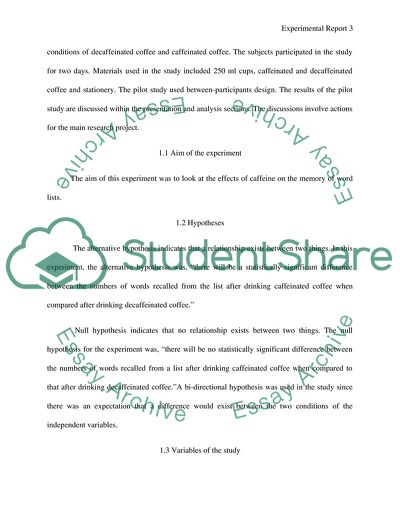Cite this document
(Effects of Caffeine on the Memory of Words List Report Example | Topics and Well Written Essays - 2000 words, n.d.)
Effects of Caffeine on the Memory of Words List Report Example | Topics and Well Written Essays - 2000 words. https://studentshare.org/psychology/1816530-experimental-report
Effects of Caffeine on the Memory of Words List Report Example | Topics and Well Written Essays - 2000 words. https://studentshare.org/psychology/1816530-experimental-report
(Effects of Caffeine on the Memory of Words List Report Example | Topics and Well Written Essays - 2000 Words)
Effects of Caffeine on the Memory of Words List Report Example | Topics and Well Written Essays - 2000 Words. https://studentshare.org/psychology/1816530-experimental-report.
Effects of Caffeine on the Memory of Words List Report Example | Topics and Well Written Essays - 2000 Words. https://studentshare.org/psychology/1816530-experimental-report.
“Effects of Caffeine on the Memory of Words List Report Example | Topics and Well Written Essays - 2000 Words”. https://studentshare.org/psychology/1816530-experimental-report.


